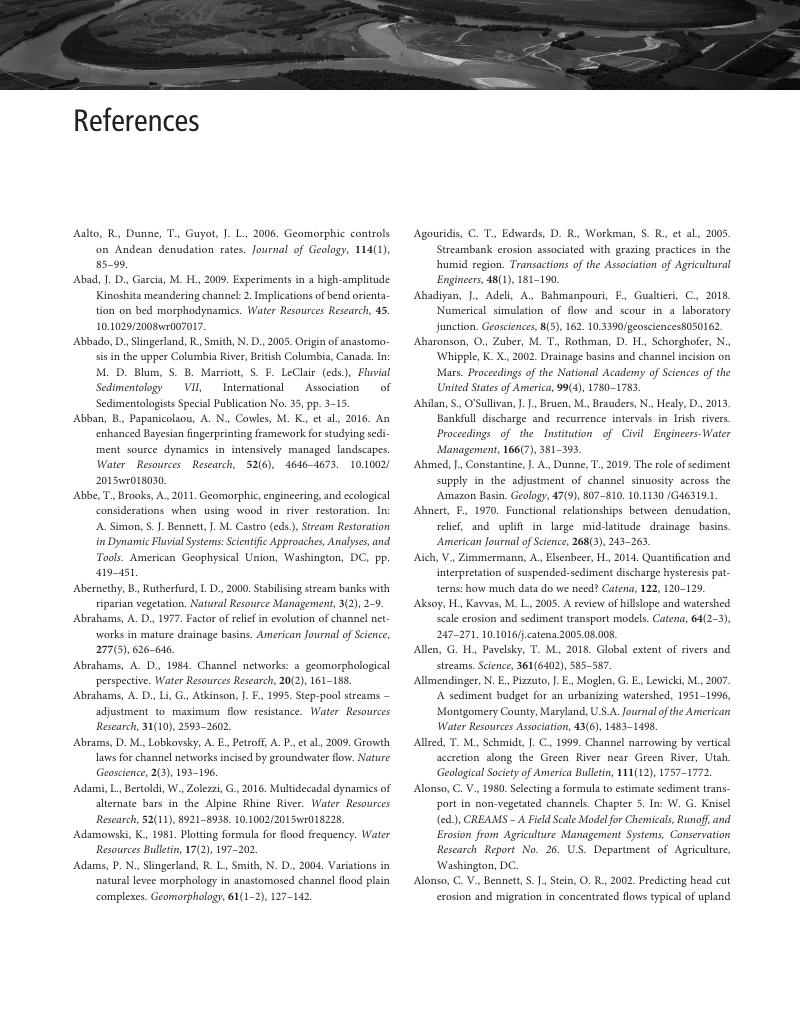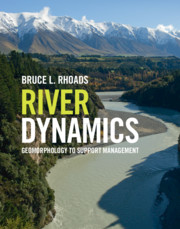Book contents
- River Dynamics
- Reviews
- River Dynamics
- Copyright page
- Contents
- Preface
- Chapter 1 Introduction
- Chapter 2 The Dynamics of Drainage Basins and Stream Networks
- Chapter 3 Sediment Dynamics at Global and Drainage-Basin Scales
- Chapter 4 Flow Dynamics in Rivers
- Chapter 5 Sediment Transport Dynamics in Rivers
- Chapter 6 Magnitude-Frequency Concepts and the Dynamics of Channel-Forming Events
- Chapter 7 The Shaping of Channel Geometry
- Chapter 8 Channel Planform – Controls on Development and Change
- Chapter 9 The Dynamics of Meandering Rivers
- Chapter 10 The Dynamics of Braided Rivers
- Chapter 11 The Dynamics of Anabranching Rivers
- Chapter 12 The Dynamics of River Confluences
- Chapter 13 The Vertical Dimension of Rivers: Longitudinal Profiles, Profile Adjustments, and Step-Pool Morphology
- Chapter 14 The Dynamics of Floodplains
- Chapter 15 Human Impacts on River Dynamics
- Chapter 16 River Dynamics and Management
- Book part
- Symbols
- References
- Index
- Plate Section (PDF Only)
- References
References
Published online by Cambridge University Press: 30 April 2020
- River Dynamics
- Reviews
- River Dynamics
- Copyright page
- Contents
- Preface
- Chapter 1 Introduction
- Chapter 2 The Dynamics of Drainage Basins and Stream Networks
- Chapter 3 Sediment Dynamics at Global and Drainage-Basin Scales
- Chapter 4 Flow Dynamics in Rivers
- Chapter 5 Sediment Transport Dynamics in Rivers
- Chapter 6 Magnitude-Frequency Concepts and the Dynamics of Channel-Forming Events
- Chapter 7 The Shaping of Channel Geometry
- Chapter 8 Channel Planform – Controls on Development and Change
- Chapter 9 The Dynamics of Meandering Rivers
- Chapter 10 The Dynamics of Braided Rivers
- Chapter 11 The Dynamics of Anabranching Rivers
- Chapter 12 The Dynamics of River Confluences
- Chapter 13 The Vertical Dimension of Rivers: Longitudinal Profiles, Profile Adjustments, and Step-Pool Morphology
- Chapter 14 The Dynamics of Floodplains
- Chapter 15 Human Impacts on River Dynamics
- Chapter 16 River Dynamics and Management
- Book part
- Symbols
- References
- Index
- Plate Section (PDF Only)
- References
Summary

- Type
- Chapter
- Information
- River DynamicsGeomorphology to Support Management, pp. 432 - 506Publisher: Cambridge University PressPrint publication year: 2020



